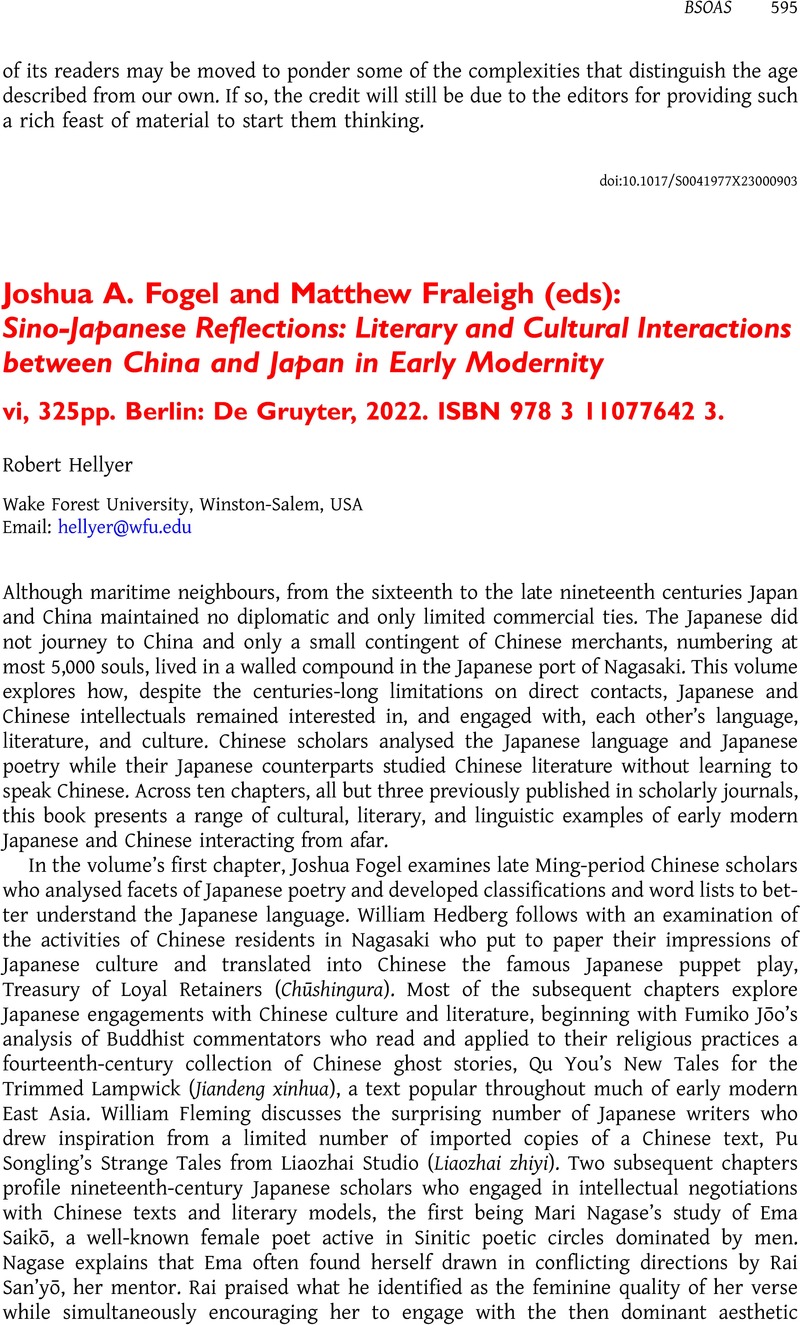No CrossRef data available.
Article contents
Joshua A. Fogel and Matthew Fraleigh (eds): Sino-Japanese Reflections: Literary and Cultural Interactions between China and Japan in Early Modernity vi, 325pp. Berlin: De Gruyter, 2022. ISBN 978 3 11077642 3.
Review products
Joshua A. Fogel and Matthew Fraleigh (eds): Sino-Japanese Reflections: Literary and Cultural Interactions between China and Japan in Early Modernity vi, 325pp. Berlin: De Gruyter, 2022. ISBN 978 3 11077642 3.
Published online by Cambridge University Press: 04 December 2023
Abstract
An abstract is not available for this content so a preview has been provided. Please use the Get access link above for information on how to access this content.

- Type
- Reviews
- Information
- Copyright
- Copyright © The Author(s), 2023. Published by Cambridge University Press on behalf of SOAS University of London



